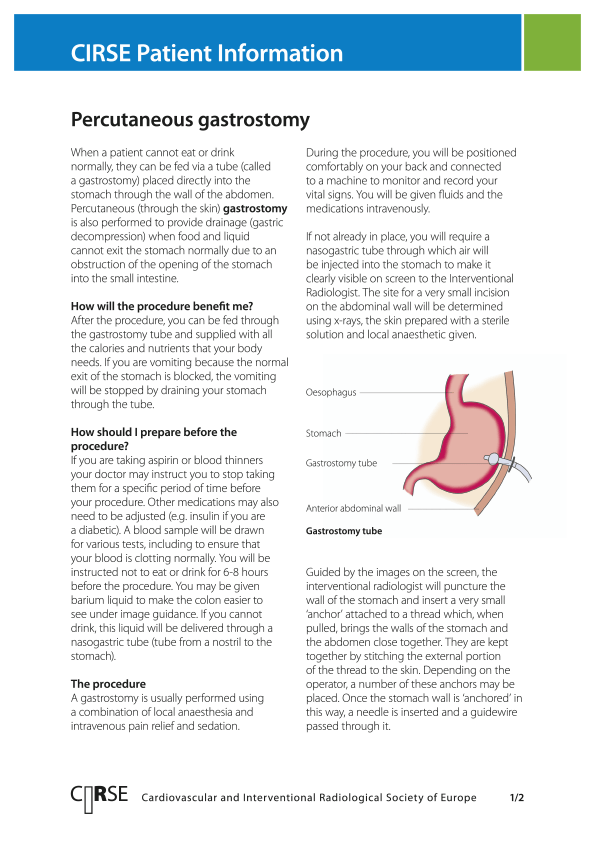Symptoms
Patients with gastroduodenal outlet obstruction may suffer from nausea and vomiting, weight loss and abdominal discomfort. This can severely affect quality of life.
Diagnosis
Gastroduodenal outlet obstruction can be difficult to diagnose, as it has similar symptoms to a number of other conditions. However, imaging techniques can be used to help identify a gastroduodenal obstruction, including CT, MRI and endoscopy.
Treatment
The condition can be treated using surgery or interventional radiology, depending on the individual patient’s situation. It is often not possible to cure the condition by surgically removing the obstruction, and although a surgical bypass is a possible palliative treatment, it is associated with high morbidity and mortality rates.
Interventional procedures can provide other options. For patients suffering from cancerous obstructions that cannot be surgically removed, stents placed via the gullet are a safe, palliative alternative. These procedures are performed either using fluoroscopic guidance alone or in combination with endoscopic guidance.

